#trans health
Text
The fact that leagues of smart and rational trans adults who are informed about the evidence base for puberty blockers wish they could’ve taken them in their youth seems to me pretty darn conclusive evidence that the balance of risk and benefit is favourable.
#lgbtq#transgender#queer#lgbtqia#trans#lgbt#gender affirming care#gender affirming healthcare#medical transition#puberty blockers#trans health#trans healthcare
9K notes
·
View notes
Text

The tweet: https://twitter.com/Lionhearted_ben/status/1629919975203848192?t=HfF1j3BVqZMgZEIHgVnz3w&s=19
And in case Twitter is being a fool, here's the PDF itself: https://drive.google.com/file/d/1PiO5JAc2_erXL9rEPU-Gj4DXQ3N0dTbe/view
Shout-out to a friend for showing me this!!
#post mastectomy#top surgery#breast cancer#breast cancer self exam#ftm#trans health#twitter#ben haseen#post op
46K notes
·
View notes
Text
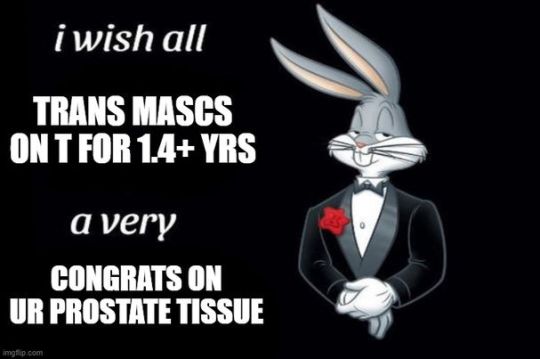
#ftm#transmasc#trans boy#trans man#trans#trans guy#transgender#trans resources#trans health#trans research#science#trans healthcare
16K notes
·
View notes
Text


cannot believe how happy i am to see periods discussed in disney shows
#my expectations are always on the floor#disney#baymax#big hero 6#turning red#trans rights#lgbt#equality#transgender#health#trans health#*posts
74K notes
·
View notes
Text
heyo just a psa: gc2b is not safe anymore. old binders from them are fine but new ones are way lower quality and will almost certainly mess up your ribs (think warping or breaks). don't get binders from amazon because they also tend to be dangerous. underworks seems to have maintained their good ratings, so if you need a binder consider going with them, and remember to always do your own research :D
25K notes
·
View notes
Text
imagine watching this wholesome show and coming away thinking, ah yes, this is BAD it’s all a NEFARIOUS PLOT
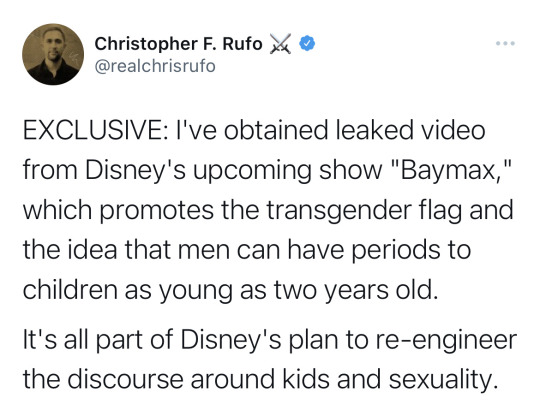

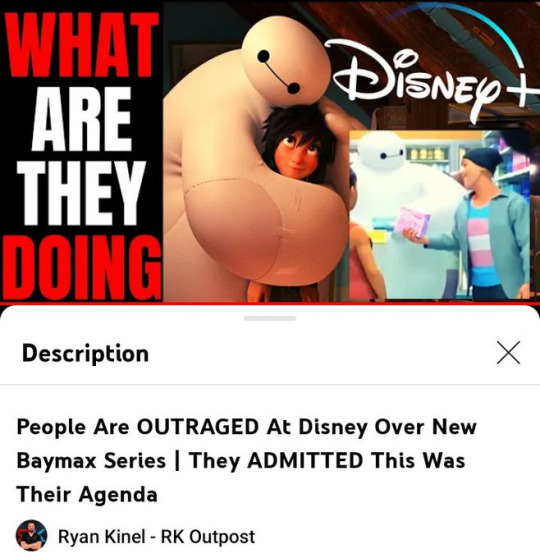



#love to see haters cry :’)#this entire episode though!!! and all-gender toilet? 🥹#baymax#big hero 6#disney#health#animated#animation#trans health#transgender#lgbt#trans rights#baymax!#equality#happy pride 🌈
57K notes
·
View notes
Text
DIY HRT: purchasing and using hormone replacement therapy without a prescription.
–
We ask your questions so you don’t have to! Submit your questions to have them posted anonymously as polls.
#polls#incognito polls#anonymous#tumblr polls#tumblr users#questions#polls about health#submitted dec 19#polls about lgbtq stuff#gender#hrt#hormones#transitioning#gender affirming care#trans health#transition#diy hrt
345 notes
·
View notes
Text

BREATHE: JOURNEYS TO HEALTHY BINDING by Maia Kobabe and Sarah Peitzmeier, with colors by Ashley R Guillory, is now available for pre-order :D
A graphic guide to chest binding with real-life stories and research-backed advice from bestselling Gender Queer author Maia Kobabe and University of Michigan professor Sarah Peitzmeier.
Breathe arose from the need for an evidence-based resource for folks considering chest binding as gender-affirming care. Its original form was a 32-page digital-only 'zine, but Peitzmeier and Kobabe saw potential for reaching a wider audience with an expanded version with more art and more exploration of what the research really shows about binding, designed to be easily readable as a printed book. This is the result.
To create Breathe, Peitzmeier and her research team interviewed many people of different ages and backgrounds about their journeys with binding, and then she and Kobabe combined excerpts from those interviews with evidence-based resources on binding into this extremely accessible book. The result is both a practical resource for trans and nonbinary folks and an engaging and perspective-broadening read for anyone interested in what it means to be on a journey of expressing one's gender in the ways that are joyful, healthy, and affirming.
64 pages, fully illustrated, single tone colors. Due out from Dutton Books for Young Readers May 2024.
Please order it anywhere except Amazon :)
403 notes
·
View notes
Text
An Alberta doctor says Premier Danielle Smith will struggle to attract trans specialists to the province if her other policies restricting health-care options for trans youth are made law.
Dr. Kate Greenaway, a trans health-care specialist and medical director of the Foria Clinic, is part of a growing number of medical professionals calling on the UCP to scrap the proposed legislation.
Greenaway said restricting health care for trans and non-binary youth will create a "culture of fear and discrimination" that will act as a barrier to attracting specialists or even keeping the few that already practise here.
Continue Reading
Tagging @politicsofcanada @abpoli
#cdnpoli#canada#canadian politics#canadian news#alberta#trans healthcare#trans health#transphobia#medical discrimination#lgbtqia+
103 notes
·
View notes
Text
Introducing: The Guide to Bottom Growth
Quick warning as I will be using anatomical terms, and I will include anatomical diagrams.
What is bottom growth and what does it look like?
Bottom growth is a common term for the enlarged clitoris, after taking T.
When you take testosterone, it induces growth in the clitoris. The growth can be pretty significant. When it grows, it comes to resemble a cis penis, on a smaller scale. It has a shaft, retractable foreskin, and head.
The clitoris and the penis- how are they related?
So, when a fetus is growing, they all start out female. The clitoris is the same bit as the glans or "head" of a cis man's penis. The growth into a penis is influenced by testosterone.
Can I prevent bottom growth?
No. Whether it grows a lot or a little is dependant on genes and your dosage, but it will happen.
It is also irreversible. While some have claimed that it has shrunken after stopping T, this is unusual and may be dependant on your genes.
What are some other names for bottom growth?
This is all up to you, based on your personal preference. Some people stick to calling it their clit or clitoris, some call it a T-Dick, some call it their bottom growth and some refer to it as a cis man would, using terms like dick, cock, penis, etc.
How big does it get?
It varies, just like with penis size. On average, most people end up with around 1-2 inches. Some people can end up with more than 3 inches! Like cis penises, they get bigger when aroused.
Can I stand and pee from it?
No. Your bottom growth is located above the urethra. While some people have enough growth to guide the flow of urine along the bottom of the shaft, this is highly dependant on your personal anatomy and can be really messy!
A surgery like *metoidioplasty can be preformed in conjunction with a urethral lengthening, which would then allow you to stand to pee using your bottom growth.
*Metoidioplasty, or meta, is a type of bottom surgery that releases the bottom growth from the labia minora. It is typically preformed with urethral lengthening, scrotoplasty and a vaginectomy. However, not everyone chooses to have each of these surgeries.
Below- Metoidioplasty, credits:

Can I use it for sex?
Yes. You can preform oral sex on bottom growth, just like with a cis penis. You can use toys on it- vibrators, fleshlights, strokers, etc. Whatever works for you.
Can I use it for penatrative sex?
Short answer: yes. If you have enough growth, you may be able to penetrate a vagina. However, to my knowledge, anal penetration is not possible with just bottom growth.
Do I need to clean it?
Yes. This can be done easily by pulling the foreskin back and cleaning any buildup out with a wet q-tip. This area may be sensitive- clean at your own pace.
Below- Bottom growth diagrams, courtesy of emisil.com


Image 1: A is pre-T, B is post-T
Image 2: Depicts the clitoris pre-T, low dose/flaccid bottom growth, and large/erect bottom growth
As always please feel free to ask questions, I will answer to the best of my ability.
#f2m#ftm#trans#trans advice#trans man#trans men#testosterone#trans male#transition#trans mentor#bottom growth#trans health#trans medicine#metoidioplasty
2K notes
·
View notes
Photo

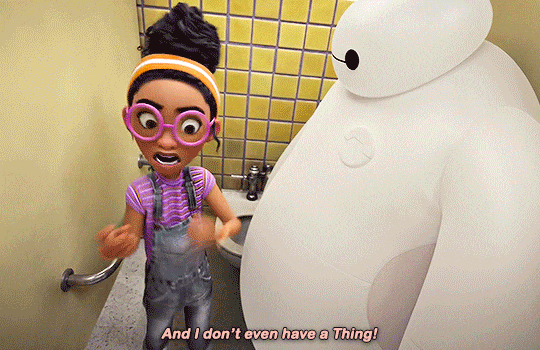


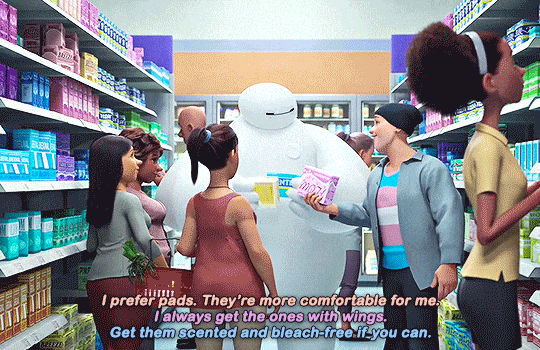


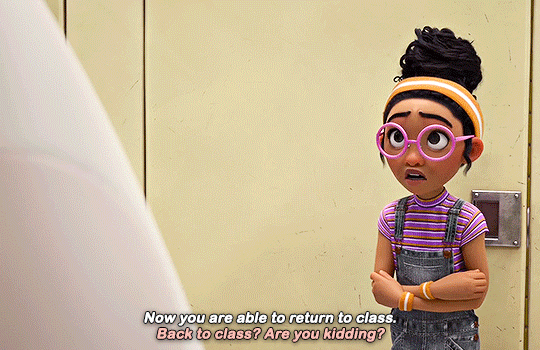

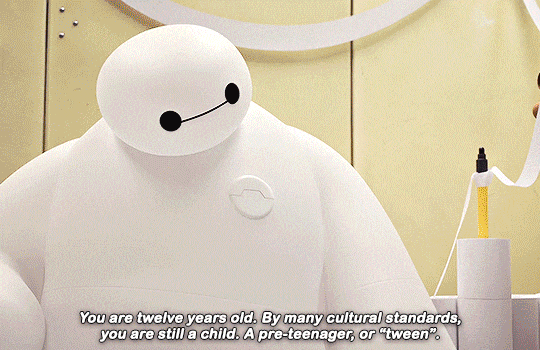
"How do you feel?” “I feel... like the kid who’s gonna kick some serious butt in this talent show. Period.” | BAYMAX
#wish i had this growing up what a great episode :')#big hero 6#baymax#baymax!#disney#lgbt#lgbtq#transgender#userbbelcher#health#trans health#equality#trans rights#chewieblog#disneyedit#pixaredit#animated#animation#animationedit
16K notes
·
View notes
Text
The drug finasteride, already used to treat hair loss and enlarged prostates, could also help to cut the risk of heart disease.
In an analysis of data from both male humans and mice, the drug was shown to improve health and reduce levels of cholesterol.
Too much cholesterol in the body is well known to increase heart disease risk, as it encourages atherosclerosis: fatty deposits in blood vessels, blocking the flow of blood through the arteries. Eventually, that can lead to strokes or heart attacks.
Continue Reading.
69 notes
·
View notes
Text
⚠️TRANS PEOPLE WITH CALIFORNIAN HEALTHCARE: YOUR SURGERIES ARE FREE⚠️
This official page from the California Department of Insurance states "health insurance policies are prohibited from arbitrarily excluding coverage for gender affirmation services including (but not limited to) hormone therapy, mental health services and surgical services."
KNOW YOUR RIGHTS!
#trans heathcare#healthcare#california#american healthcare#american health insurance#american health system#transgender tips#transgender health#trans health#trans issues#trans law#trans laws#trans legislation#transgender laws#top surgery#top surgeon#bottom surgery#transgender
282 notes
·
View notes
Text

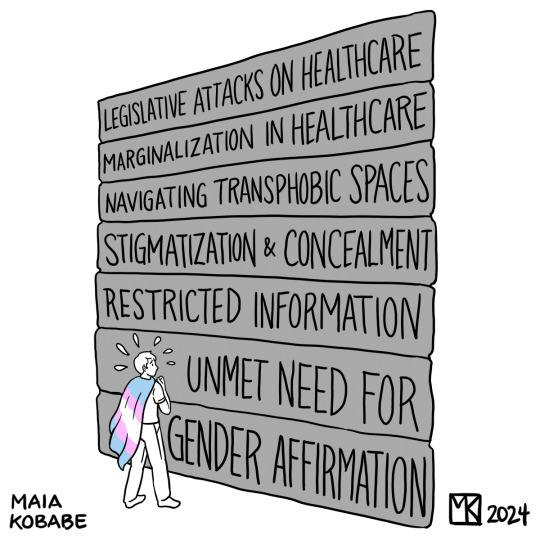

Transphobia Makes Chest Binding More Dangerous
Chest binding, or wearing anything to flatten the chest in order to appear masculine or androgynous, is one of many ways that transmasculine and nonbinary people can affirm their gender identity and harmonize their physical presentation with their sense of self. Some people bind in order to “pass” as male at times when being visibly transgender could be dangerous. Others bind for the mental health benefits, documented across multiple studies, of being able to move through the world feeling at home in an authentic identity. But despite these life-changing benefits, anti-trans activists focus on the risks of binding, such as shortness of breath, skin abrasions, or shoulder pain, and seek to restrict the practice.
(read the rest of the article below the cut or here online)
Binding scares anti-trans activists because of its accessibility. Unlike hormones, binding requires no prescription; unlike state-ID changes, it requires no paperwork. Binding is often one of the first ways that trans and nonbinary youth who are assigned female at birth can flexibly, reversibly—sometimes quietly under their clothes and unbeknownst to anyone else—“try on” a new gender identity to see how it feels. This accessibility makes binding terrifying to those who want to eradicate trans people from public life. Their usual tricks are powerless to stop binding: there is no teacher they can gag, no librarian they can defund, no doctor they can criminalize to stop people from binding. Unless anti-trans zealots are willing to ban sports bras, bandages, tape, shapewear, or even swimsuits and tight shirts, there is no way to render binding completely inaccessible.
It is no surprise then that anti-trans activists hyperfocus on the health risks of binding, often misrepresenting studies on binding to inflate the physical risks of binding and ignoring the sometimes life-saving mental health benefits. We know because one of us (Sarah Peitzmeier) conducted most of those studies. Tired of seeing statistics from these research studies ripped out of context and weaponized against the very communities who participated in and supported the research, we began to discuss turning the findings from these studies into a book. Breathe: Journeys To Healthy Binding, is a resource for those who have questions and concerns about binding, and for those who already bind and want to do so in ways that maximize the mental health benefits and minimize the physical risk. We want to help people bind in ways that are affirming, yet gentle on the body.
Anti-trans activists who claim to be “protecting” people from the harms of binding by trying to restrict binding specifically and trans people more generally are in fact making binding more dangerous. In our research and lived experience, here are six ways we have seen transphobia make binding far more dangerous than it should be for trans and gender diverse people.
Legislative attacks on medically necessary healthcare
Binding is the only option left to mitigate chest dysphoria in states where best-practice medical care has been banned. Anti-trans bills blocking medical or surgical affirming care for trans youth have been passed in 24 states, with politicians inserting themselves between patients, families, and their doctors. Trans youth who go through puberty early without access to puberty blockers may have to manage severe chest dysphoria for a decade before they are even legally allowed to pursue top surgery, assuming they have the financial resources to access it. We know that receiving puberty blockers, compared to wanting puberty blockers but being unable to access them, is associated with 70% lower lifetime odds of suicidal ideation – so this is lifesaving care. It seems particularly cruel, then, for the same people who advocated for these laws denying healthcare to also attack binding. If anti-trans activists truly cared about the potential risks of binding for trans youth, they would not simultaneously advocate for bans on medically necessary care.
Marginalization in healthcare
Trans patients who do experience injuries or health issues from binding often don’t have access to knowledgeable and compassionate treatment. Even trans-affirming providers generally receive no training in how to counsel patients to reduce their risk around binding, as medical and nursing schools typically see trans-specific topics like binding as “specialty” topics. At worst, providers may be actively prejudiced against trans people. Laws against providing gender-affirming care in 24 states can be interpreted broadly and scare providers from offering any kind of care to trans adolescents or even adults. Binding-related medical issues are thus left to worsen without quality clinical care.
Binding can be necessary to navigate transphobic spaces
Being visibly trans can expose people to discrimination, and binding is sometimes the only way to safely move through a hostile world. It is still legal to discriminate against trans people in employment or housing in 30 states, and trans people are banned from using the restroom that matches their gender in 10 states. Some trans people may present as otherwise masculine but for the appearance of their unbound chest, which would “out” them as transgender. Until we live in a world where people can safely express a range of gender presentations without living in fear of assault or discrimination, binding is essentially the only option for many transmasculine people who need to “pass” for their own safety. These people may also have to keep binding for safety reasons regardless of any symptoms they may develop.
Concealing binding due to stigma increases the risks
The health risks from binding are increased by the need to conceal it. For instance, teens who are trying to conceal their binder from their parents often have trouble washing their binder regularly without their parents seeing it in the laundry. As a result, the dirt and sweat buildup on their unwashed binder predisposes them to skin complications. Without parental support, many teens cannot purchase a binder, which is typically ordered online with a credit card. Some of these teens resort to using ACE bandages, which are more readily available but far more dangerous because they are designed to compress inflammation. One 2020 study by researchers and clinicians at the Children’s Hospital of Los Angeles found that teens with parents who opposed binding were almost twice as likely to have used ACE bandages to bind their chests. Teens with supportive parents had access to safer options.
Restricted access to information on safer binding that does exist
Because discussing gender identity is banned or restricted in schools in 14 states, trans and nonbinary people often struggle to access information about trans-specific issues such as binding. We have a growing evidence base and clinical expertise around how to reduce risk associated with binding—including taking one day off from binding each week, avoiding use of ACE bandages, and stretching muscles and ligaments that may be constricted by binding—but in an era of book bans and gag rules, many trans people have no way to learn these important tips. Instead, they may assume that binding is inherently painful and this is just the price they have to pay, which is unequivocally not true. We now know there are so many ways to make binding safer.
Unmet need for gender affirmation
When there is a gap between how people fundamentally see themselves and how the world sees them, they are more likely to engage in risky (but identity-affirming) behaviors to help close that gap. When trans people are chronically misgendered at work or school and are banned from medically affirming their gender, binding may be one of the only tools they have to affirm their gender. They will be more likely to ignore signs that their body is struggling with the side effects of binding, as they have nothing else to affirm them. Combine this with lack of information about how to bind more safely and lack of healthcare to address problems that emerge, and people can end up with serious binding-related symptoms.
Forty percent of trans adults in the U.S. have attempted suicide at some point in their lives. Binding can help people imagine a future for themselves that feels worth living. As one of our research participants said, “Binding gave me the freedom to exist.”
Many people successfully bind with minimal physical side effects even in today’s world. If every trans person who wanted to bind could do so with a properly fitting binder, while living day to day without fear violence for being visibly trans, all while having access to knowledgeable and affirming medical care (including puberty blockers or top surgery as desired and appropriate), binding could become safer for everyone.
It’s on all of us to create that world. We call on everyone to fight back against anti-trans legislation, disrupt anti-trans hostility, and to support the trans youth and adults in our communities as they become their most authentic selves.
By Maia Kobabe and Dr. Sarah Peitzmeier
May 8, 2024 7:00 AM EDT
Kobabe (e/eir/em) is author of the award-winning and bestselling memoir Gender Queer, the most challenged book in America for the last three years. Peitzmeier Ph.D., MSPH (she/her) is a social epidemiologist and assistant professor in the Department of Health Behavior and Biological Sciences at the University of Michigan. Kobabe and Peitzmeier are the authors of BREATHE: JOURNEYS TO HEALTHY BINDING, a graphic guide to chest binding with real-life stories and research-backed advice.
199 notes
·
View notes
Text
hi not being called the name and pronouns you want to be called is a big fucking deal actually. yes, i know honey, you're used to it. you're so used to it, because you have to be. because if you realized how people don't see *you,* and instead see who they *want* you to be... it'd hurt too much. and i don't want to trigger that pain here.
but i do want you to know that just because it doesn't feel important on the surface, doesn't mean it isn't significant. doesn't mean you don't deserve better. doesn't mean you shouldn't fight for yourself. i want you to know your feelings and the pain they cause matter, no matter how repressed they are.
being queerly gendered is hard in this world, and it's even harder when people don't truly see you. whether they're passing strangers who make too many assumptions about you, or people meant to love you who refuse to see who you are. it's hard. it's tiring. and one day, when you get all the love and support you deserve, you'll know just how important you are.
until then... take care. be patient with yourself. give yourself a little grace. even seemingly unrelated things get exhausting or distressing when your identity is ignored. that's natural. it's not your fault. ever. it's theirs.
#ifairy#lgbt#lgbtq#lgbtqia#genderqueer#transgender#trans#nonbinary#transsexual#trans health#mental health#queer health#queer#lgbt health#mental health support#trans community#enby#gender nonconforming#lgbtq+#lgbtqia+#lgbt+#depression#transphobia#internalized transphobia#internalized queerphobia#queerphobia#dear self
345 notes
·
View notes
Text
"Lion's Problem"
So last year the Johns Hopkins Center for Communication Programs commissioned me to make an animation about birth control, so I did one about a trans lion taking birth control, though they underpaid me and never told me if they actually aired it so here it is
#animation#2d animation#reproductive health#trans health#testosterone#birth control#my art#art#lion#cute#procreate#my animation#project#commission#work art#lions problem
131 notes
·
View notes